It brings me back to my love for sea turtles and how I recognise that my connection to a species, is connected to a place in particular. I really want to explore this idea, for other people as well.
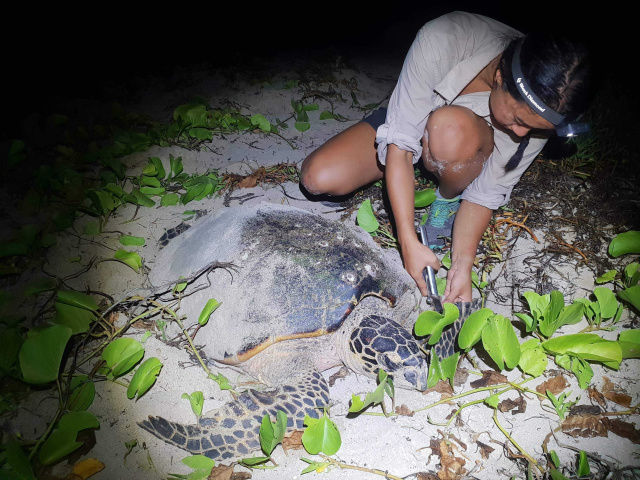
Bruny Island is a really unique part of Tasmania. It's home to a lot of unique wildlife, including the 12 Tassie endemic birds. And it's also home to a wide range of people. So you have your residents, you have your shack owners, your business owners... and you have people who just want a little getaway from the city. You also have the tourists. It offers a lot of different perspectives for my project.
My project is based on the Neck on Bruny Island. Everyone knows it as the iconic landmark on Bruny, as the isthmus that connects the north and the south.
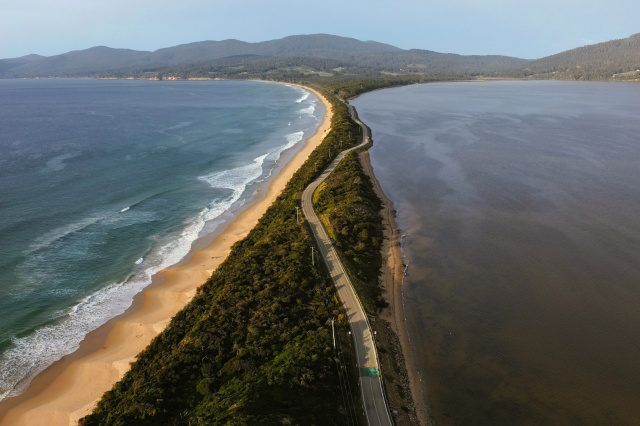
But it is also a nesting ground for fairy penguins and short-tailed shearwaters. Not so many of the fairy penguins anymore, I have to say - but it still hosts a high biodiversity for other bird species with the surrounding dunes and coastal vegetation. So you have the seagulls, you have the hooded plovers, you have the pied oyster catchers.
It's really unique in a sense that it has that biodiversity, that ecological connectivity and it's pretty prone to environmental change as well. That's something that I'm hoping to look at more.
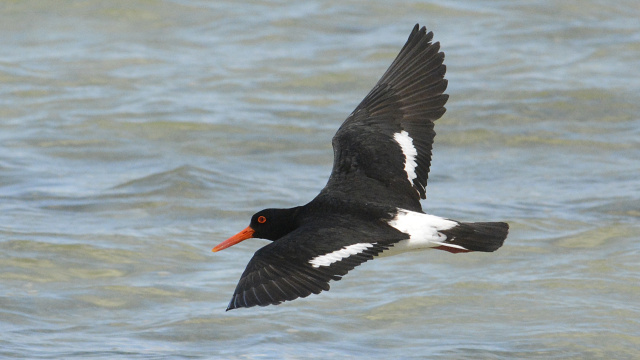
My project is a blend of social and spatial sciences, social being the surveys and the interviews I conduct with the residents. I'm also using drones to capture high resolution aerial images of the Neck. I'm hoping to create immersive 3D terrain models that I can present back to the community.
The models would simulate potential sea level rise scenarios, looking at nesting sites for resident fairy penguins or shearwaters, and how the loss of these species could influence our relationship to a place like the Neck.
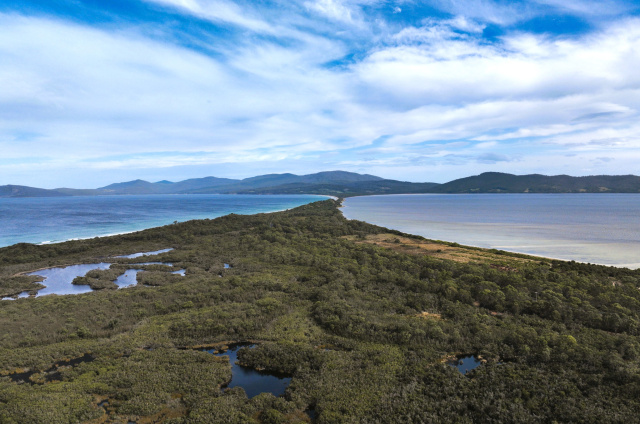
I've had about 60 responses so far for the in-depth surveys and I'm really hoping to get to 100, so if anyone out there is listening, if they want to participate - please don't hesitate to reach out.
Drone-wise it has been pretty good. We were able to capture the whole Neck just last week, and I'm looking into processing those images and seeing what they look like.
It's called digital photogrammetry. It's a fancy way of naming the conversion of aerial images into nice models, with the platforms and software we use.
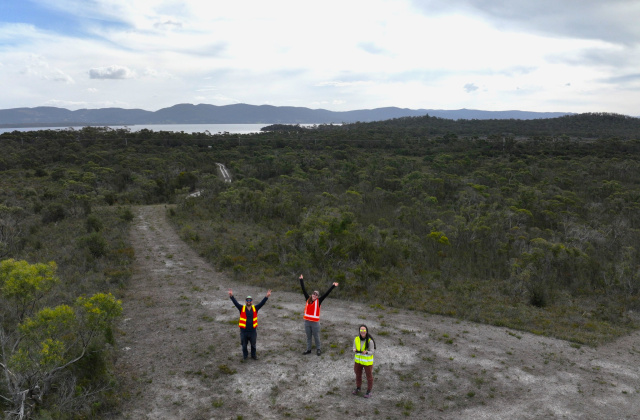
The process takes a lot of like computing power. It could take the whole day to run. We had 70 gigabytes of data that we took for the Neck imagery, so it's just lots of processing and quite a bit of modelling to figure out, depending on how detailed or accurate you want these models to be.
In terms of species special to me, I do love the Forty-spotted pardalote, because of their behaviour and I also how everyone here always has a little love for something so small. The species is always something that brings everyone together. I like that.
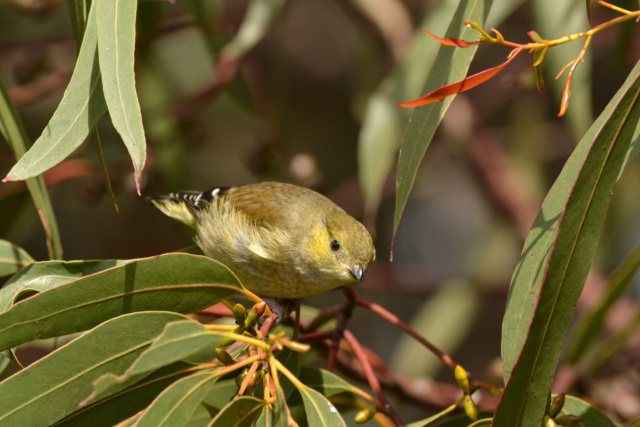
That's another reason why I love being outdoors or being in Nature - because of how it brings people together. I loved the sense of community in Tasmania when I first came to visit.
And so, even though I love sea turtles and there are no sea turtles here, I decided that I really value that community spirit, and that's something I want to harness. That's why I'm here, researching about the species that people love.
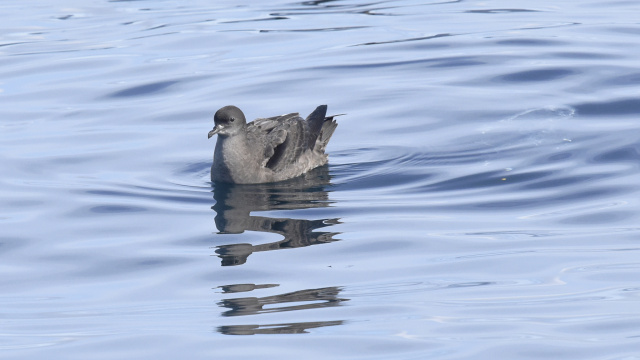
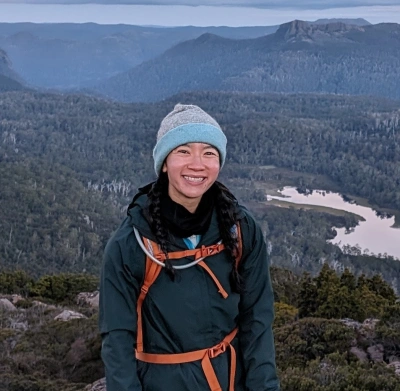
Edith Shum
It brings me back to my love for sea turtles and how I recognise that my connection to a species, is connected to a place in particular. I really want to explore this idea, for other people as well.

Bruny Island is a really unique part of Tasmania. It's home to a lot of unique wildlife, including the 12 Tassie endemic birds. And it's also home to a wide range of people. So you have your residents, you have your shack owners, your business owners... and you have people who just want a little getaway from the city. You also have the tourists. It offers a lot of different perspectives for my project.
My project is based on the Neck on Bruny Island. Everyone knows it as the iconic landmark on Bruny, as the isthmus that connects the north and the south.

But it is also a nesting ground for fairy penguins and short-tailed shearwaters. Not so many of the fairy penguins anymore, I have to say - but it still hosts a high biodiversity for other bird species with the surrounding dunes and coastal vegetation. So you have the seagulls, you have the hooded plovers, you have the pied oyster catchers.
It's really unique in a sense that it has that biodiversity, that ecological connectivity and it's pretty prone to environmental change as well. That's something that I'm hoping to look at more.

My project is a blend of social and spatial sciences, social being the surveys and the interviews I conduct with the residents. I'm also using drones to capture high resolution aerial images of the Neck. I'm hoping to create immersive 3D terrain models that I can present back to the community.
The models would simulate potential sea level rise scenarios, looking at nesting sites for resident fairy penguins or shearwaters, and how the loss of these species could influence our relationship to a place like the Neck.

I've had about 60 responses so far for the in-depth surveys and I'm really hoping to get to 100, so if anyone out there is listening, if they want to participate - please don't hesitate to reach out.
Drone-wise it has been pretty good. We were able to capture the whole Neck just last week, and I'm looking into processing those images and seeing what they look like.
It's called digital photogrammetry. It's a fancy way of naming the conversion of aerial images into nice models, with the platforms and software we use.

The process takes a lot of like computing power. It could take the whole day to run. We had 70 gigabytes of data that we took for the Neck imagery, so it's just lots of processing and quite a bit of modelling to figure out, depending on how detailed or accurate you want these models to be.
In terms of species special to me, I do love the Forty-spotted pardalote, because of their behaviour and I also how everyone here always has a little love for something so small. The species is always something that brings everyone together. I like that.

That's another reason why I love being outdoors or being in Nature - because of how it brings people together. I loved the sense of community in Tasmania when I first came to visit.
And so, even though I love sea turtles and there are no sea turtles here, I decided that I really value that community spirit, and that's something I want to harness. That's why I'm here, researching about the species that people love.

You might like...

Sea turtle spark

An irreplaceable connection to place

Bruny Island launch: Bob Graham on the hidden world behind the photos

Bruny - two islands joined by a Tombolo?
Newsletter
Sign up to keep in touch with articles, updates, events or news from Kuno, your platform for nature
